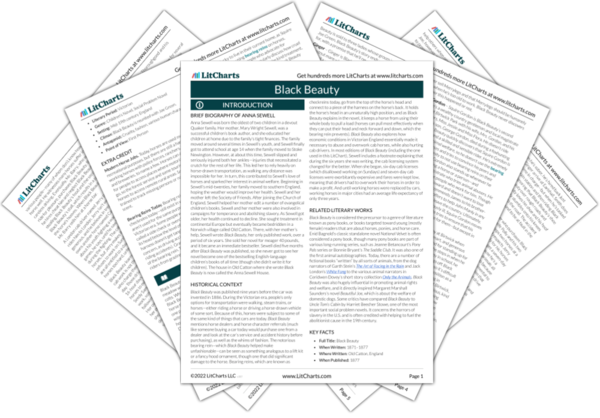This nameless horse’s story adds credence to what Sir Oliver said about blinkers earlier in the novel: that they’re dangerous and don’t actually help horses be less afraid. The horse’s master also doesn’t seem to realize that this horse is naturally inclined to be nervous and afraid of things. In this way, the owner doesn’t respect the horse he has—instead, he tries to whip the horse into becoming the horse he wants.
